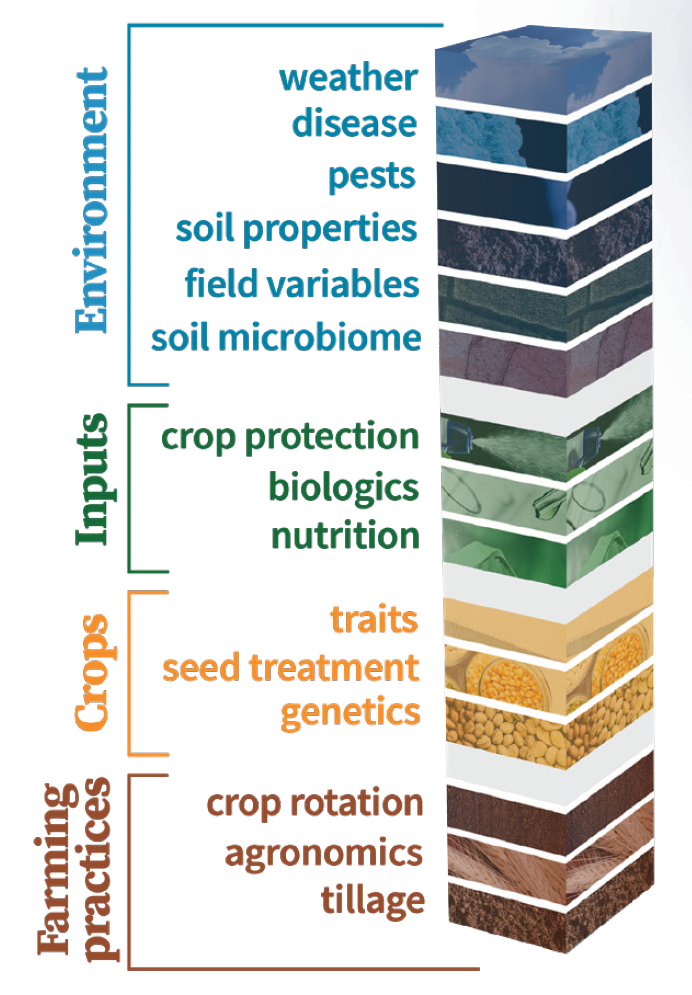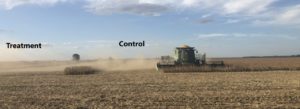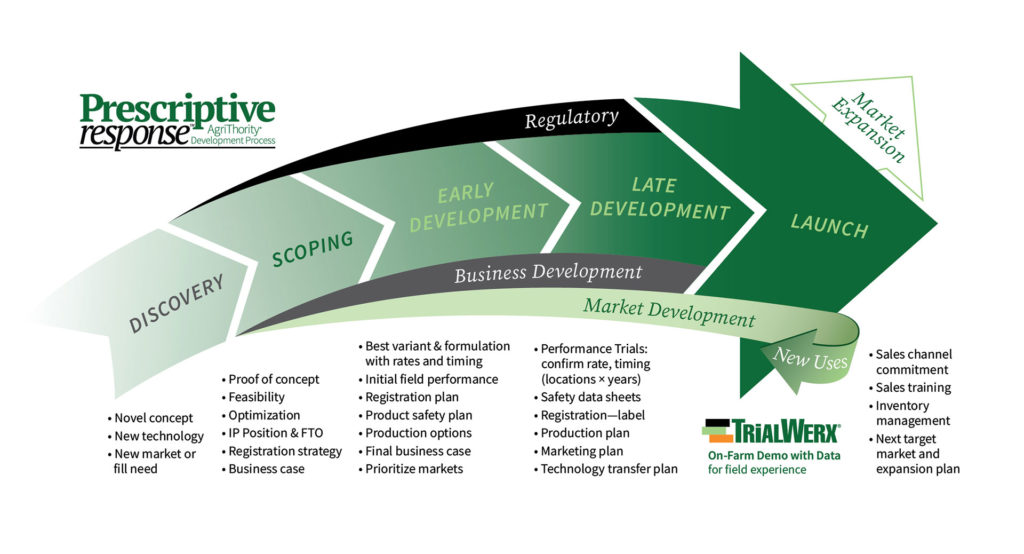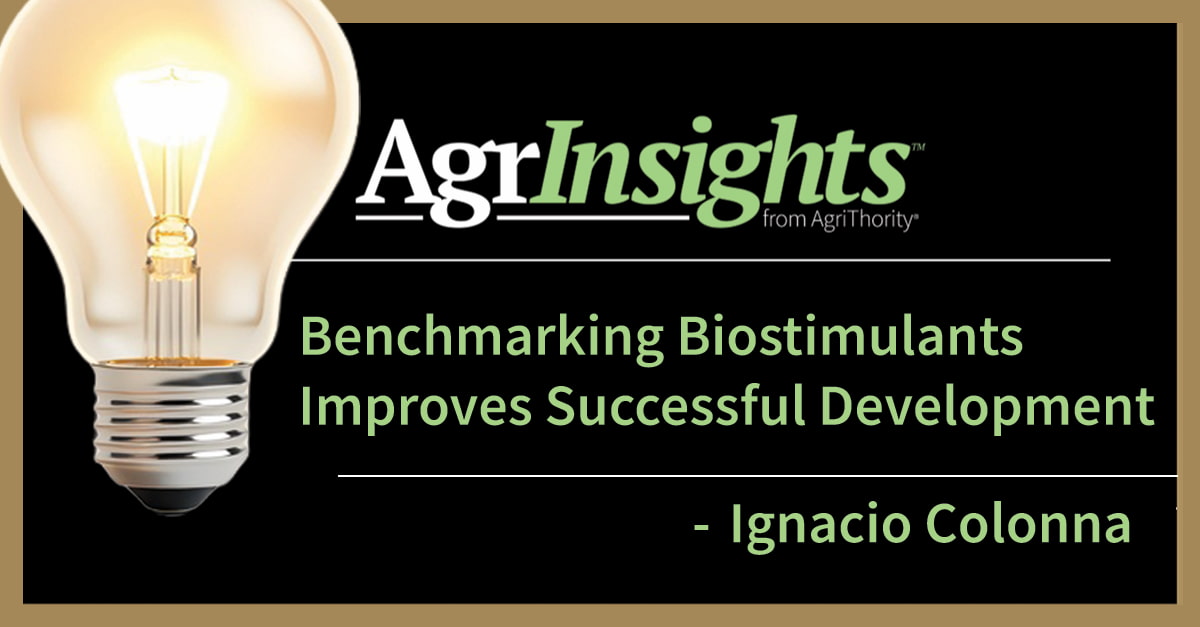Agricultural experimentation has been evolving over the thousands of years humans have been growing plants. Historically done by farmers in their fields, agricultural experimentation expanded into scientists conducting laboratory tests before taking a product to the field. The agricultural experimentation in labs, greenhouses and small plots continues to evolve with more precise ways to measure and evaluate new technologies. This very same technology has the potential to make large on-farm trials more informative, pointing to the return to farmer fields. What goes around, comes around.
Once an agricultural innovation has been discovered, researched and tested in the laboratory, much work is yet to be done before that product goes into the hands of farmers. Arguably, the experimentation effort required for field product development is longer and as vigorous as the initial discovery and research.
The purpose of conducting field trials on a new product is to generate enough information and conditions to emulate future use in a variety of weather and field conditions. In other words, companies simulate usage before the product ever hits the market to isolate and dimension the technology’s effect in a precise way. The control experimental error, so far, relies on replicated small plot trials, conducted in a number of locations and years. More locations, years and replications translate into a better understanding of the applied treatment effect and, consequently, a better estimation of the true value of the technology.
In Giuditta Parolini’s paper, Charting the history of agricultural experiments, he says, “Even though the questions underpinning agricultural experiments remain largely the same, the instruments and practices for answering them have changed constantly during the twentieth century with the advent of new disciplines like molecular biology, genomics, statistics, and computing.”
Conventional agricultural field experimentation will continue to evolve, as technology is providing more precise measurement tools. Sensors, imagery and sampling methods will increase the quality and number of measurements allowed, improving the precision of the assessments.

Additional layers of information, like weather and soil, as well as the field history, may now be overlaid with the field trials, allowing additional correlations to be drawn and providing new opportunities for insights. Finally, all that wealth of data can be brought together through new analytical methods, powered by computational biology, building knowledge and innovative insights.
Large plot, on-farm, demonstration trials are an important component for a successful technology transfer and product launch. The close evaluation of new technologies under farm conditions offers opportunities to detect unexpected operational issues not observed in previous stages and reduces the risks after commercial launch. But, more importantly, farmers, agronomists and distributors gain hands-on experience. This engagement of the “supply-chain” is a key component for successful technology transfer and commercial success.
Growers listen to other growers.
But this very last step of Agricultural Product Development remains an unexplored opportunity as far as experimentation. Most of these on–farm trials are conducted as demonstration fields only. Without true experimental design and management, these large plot trials offer very little new information and insights on the new product performance. Also, unless the product effect is truly remarkable, grower experience will be limited, creating the perception of an average product. Collecting single average yield of a large plot does not produce new insights and often does not generate meaningful benefits for the growers.

The existing technology provides an opportunity to transform large plot trials into a source of valuable information and take the grower experience to a new level. Layers of digital information currently available allow the best placement and management of large scale on-farm trials. Precision agriculture technology tools allow the generation of temporal and spatial data series.
Finally, innovative analytics bring all that information together and offer clear answers on when and how the new technology provides its best results. Additionally, the analytics improve the grower experience, not only with regard to the new product, but also about their own farm. To take the large plot demo trial to a new analytical level, AgriThority® launched a new service called TrialWerx® that transforms data into value.
The evolution of technology will continue transforming agricultural experimentation. The ability to collect information with greater precision and analyze large sets of data will increase the power of detecting new correlations and produce even deeper insights. The blooming advancement of computational biology also points to the increasing relevance of modeling in making the agriculture experimentation process even more powerful and predictable.
The airplane industry is a good parallel. Projecting and building a modern airplane is a very complex process, requiring the precise assembly of 1.6 million pieces. That process, which used to be heavily based on the assembly of prototypes and the courage of their testing pilots, today is streamlined by computer modeling. Although agriculture is a much more complex system and often unpredictable, the growing power of computation processing will allow the construction of refined models and drive product development decisions.
Regardless of how much experimentation has evolved, the development discipline is a key requirement to building a successful product. The most innovative concept will not translate into a great product unless a rigorous development path is followed. This is as much about process, as it is about science. Having clarity on the path toward the target market, the technical development and the regulatory process are critical. Then translating that into a series of questions that must be answered and the order they must be addressed is essential. The urge to jump critical steps frequently results in failure. Going faster does not mean going further.
AgriThority® uses a disciplined, proven Prescriptive Response™ process to help develop new products. When your Research is ready for Development, turn to AgriThority for scientific product, business and market development expertise. As an independent global science resource, we focus on exploring potential, expanding market access, and evolving production for greater food security and sustainability.  To learn more about our Prescriptive Response™ development services, contact Gloverson Moro, Ph.D., Director, Global Product Development, by emailing gloverson.moro@agrithority.com or call +1-816-891-0916.
To learn more about our Prescriptive Response™ development services, contact Gloverson Moro, Ph.D., Director, Global Product Development, by emailing gloverson.moro@agrithority.com or call +1-816-891-0916.



